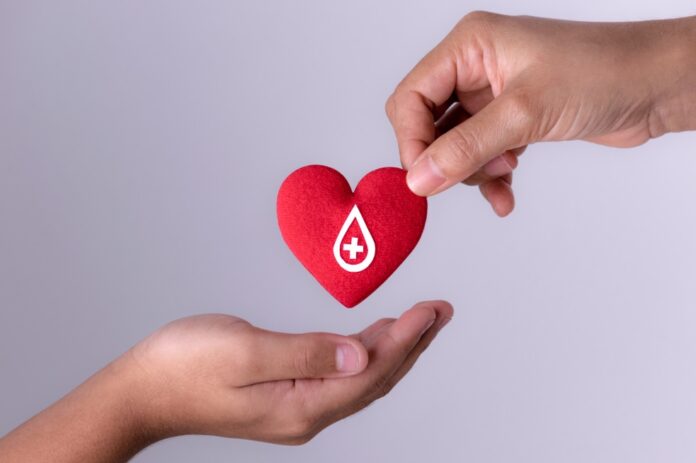Every two seconds someone in the United States needs blood, including people with disabilities. The donation of blood is vital for people for many reasons, such as surgeries, cancer treatment, chronic illnesses and traumatic injuries, among others. Sadly, the demand for blood can’t always meet because just 3% of age-eligible people donate blood yearly, according to the American Red Cross. That’s why it’s important for potential donors of all abilities — yes, people with disabilities can donate blood — to roll up their sleeves.
National Blood Donor Month is Lifechanging
Typically during the winter season, available blood supplies are at their lowest quantities. In fact, the American Red Cross reports that it collected 27,000+ fewer blood and platelet donations during the weeks of Christmas and New Year’s than needed to sustain a sufficient supply. Consequently, during the month of January, the nation is urged to help combat the storage by participating in National Blood Donor Month, an annual call to action that was enacted more than five decades ago. But, of course, you don’t have to wait until January.
Depending on the medical need, patients receive whole blood, red cells, platelets or plasma; and it all starts with the generous donation of one person. A whopping 1-in-7 hospital patients require blood transfusions, according to the Association for the Advancement of Blood & Biotherapies; again, for varying reasons like trauma, postpartum hemorrhage, hemophilia, kidney disease, liver disease, preterm infants, organ transplants, burns and more. Many patients with inherited blood disorders – such as sickle cell disease (SCD) and thalassemia – need frequent transfusions to manage their disease. And experts attest that better-matched blood equals better outcomes for patients. Thus, that means all blood types must be abundantly available.

People with Disabilities Can Donate Blood
Most people with disabilities can donate safely and do not require any modifications, says the American Red Cross, but the organization is able and willing to make accommodations if and when necessary.
“The American Red Cross will modify its standard donation procedures for donors with disabilities as long as the modifications do not compromise the safety of the blood for transfusion or substantially increase the risk to the donor,” Rodney Wilson, American Red Cross Biomedical Services Communications Specialist, tells AmeriDisability. It’s important to note that the American Red Cross says that a donor must meet all health history screening criteria to be an acceptable donor, and screening criteria cannot be modified.
Wilson says that many donors with intellectual disabilities can donate blood. “However, donors cannot donate for another person if their comprehension or memory is impaired, such that they cannot reliably answer the health history questions.”
Additionally, the National Institutes of Health (NIH) says that having diabetes should not affect a person’s ability to donate blood as long as they feel well. People with both type 1 and type 2 diabetes can donate blood if their diabetes is under control (i.e. with insulin or medication). People with diabetes should closely monitor blood sugar levels during recovery, and they may need to make changes in insulin levels as they recover.

Donating Blood is Good for Donors and Recipients
After potential donors complete the necessary questionnaires, they’re given a mini-physical exam to access blood pressure, body temperature and pulse. This basic check-in on important vital numbers is an added bonus! A small blood sample may be taken to test for infectious disease and to measure hemoglobin levels that see how much iron is in a person’s blood (as low levels may reveal anemia, causing ineligibility).
“Sometimes we diagnose high blood pressure or an arrhythmia (irregular heartbeat),” Dr. Fernando Martinez, medical director of transfusion services and donor operations at MD Anderson Cancer Center in Houston, shared in a press statement. “Finding something like that can be life-altering.”
Studies show that donating blood may positively aid heart health by reducing blood pressure and cholesterol levels. According to OneBlood, being a regular donor can help with blood flow and reduce arterial blockages.
Lastly, donating blood can stimulate the “do good, feel phenomenon.” You see, research suggests that when someone does something good, a happiness high ensues. And isn’t saving lives something to feel good about?

The Basics of Blood Donation
Experts advise that donors hydrate sufficiently, eat a healthy breakfast, get adequate sleep and forgo smoking or alcohol on the day of and night prior to donation. It may also be wise to continue hydrating, abstain from alcohol and avoid strenuous physical activity immediately following.
A whole blood donation takes about an hour from start to finish, according to the American Red Cross, but the actual donation itself only takes between 8 to 10 minutes. The donation of platelets, the tiny cell fragments that form clots and help stop bleeding, takes longer, averaging three hours instead of one hour. Each blood and platelet donation can save the lives of as many as three people!
Blood donors can even lessen that time commitment by completing pre-donation reading and health history questionnaires online at RedCrossBlood.org/RapidPass. Appointments can be made via the American Red Cross Blood Donor app or 1-800-RED CROSS (1-800-733-2767). It may be helpful to call ahead to request accommodations if needed.
In most states, eligible donors must be at least 17 years old or 16 years old with parental consent. Donors must also weigh a minimum of 110 pounds and be, generally, in good health. Upon arrival at a donation site, a blood donor card or driver’s license or two other forms of identification are required for check-in.
Human blood can only be replaced by, you guessed it, human blood. Currently, there is no technology to make artificial blood. Generally, a person can donate blood every 56 days or up to six times per year; and platelets can be done 24 times a year. Yet, on average, people give blood only 1.5 times a year. Think about it: If everyone donated just one more time, the blood shortage wouldn’t be nearly as severe. So… do you have an hour to save lives?






